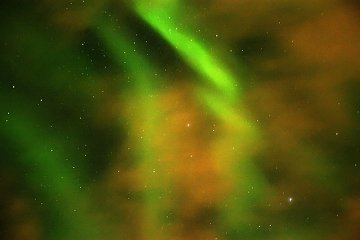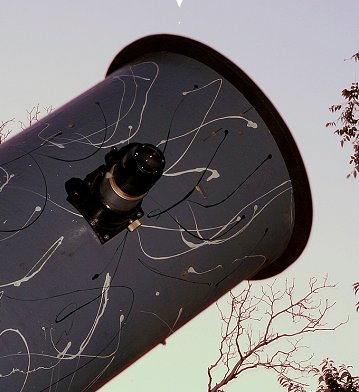 Where's Saturn? Is that a UFO--or the ISS? What's the name of that star? Get the answers from mySKY--a fun new astronomy helper from Meade. . Where's Saturn? Is that a UFO--or the ISS? What's the name of that star? Get the answers from mySKY--a fun new astronomy helper from Meade. . PROMINENCE ALERT: "There is a nice prominence on the sun's southeastern limb today," reports Emiel Veldhuis of Zwolle, the Netherlands. The movie he made using his Personal Solar Telescope resembles an erupting volcano. "It looks more like a cauliflower to me," says Cai-Uso Wohler who sends this picture from Bispingen, Germany. Either way, the sun is putting on a good show; if you have a solar telescope, check it out! more images: from Michael Borman of Evansville, Indiana; from P-M Hedén of Vallentuna, Sweden. AURORA SEASON BEGINS: Today is the first day of northern Fall--and that means it's aurora season. For reasons not fully understood, the weeks around the autumnal equinox produce, on average, more geomagnetic storms than any other time of year. Even the mildest solar wind stream brushing against Earth can ignite auroras. Just last night in Nunavut, Canada, James Bell witnessed this display: 
Photo details: Canon Digital Rebel, 15 sec. exposure.
"I'm just learning to take pictures of auroras," says Bell. Good start. The display was fueled by a high-speed solar wind stream that hit Earth's magnetic field on Sept. 21st. Earth is still inside this stream and high-latitude sky watchers should remain alert for auroras tonight. (Tip: Local midnight is often the best time to watch.) September 2007 Aurora Gallery
[August 2007 Aurora Gallery] [Aurora Alerts] MAXIMUM VENUS: No auroras? No problem. There is another bright light in the sky and anyone can see it: Venus. The second planet from the sun is at maximum brightness this week and visible in broad daylight. This morning in Kansas, Doug Zubenel caught the planet rising over the end-ring of his 12.5-inch telescope: 
Photo details: Canon Rebel XTI (Hutech modified), 50mm Nikkor lens
Elsewhere, in Florida, Howard Eskildsen photographed the planet beaming through clouds above Ocala. And in New York, cardiologist Elias Bonaros aimed his Blackberry through a pair of 20-power binoculars to capture this daylight photo. While Venus is visible in broad daylight, it is easier to find just before sunrise. No sky map is necessary. Simply look east at dawn for the brilliant light. BONUS: Got a backyard telescope? Point it at Venus. Like the Moon, Venus has phases, and at the moment it is a beautifully slender crescent. Take a look! | 
